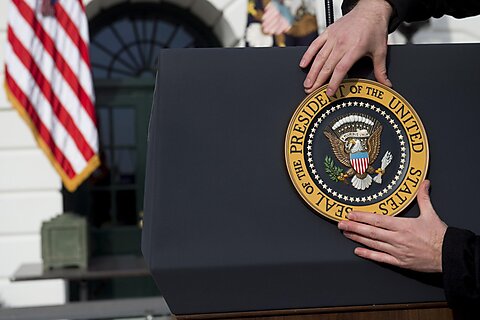The goal of the 2025 tax extensions should be to keep tax rates low and meet calls for additional pro-growth tax cuts, such as a lower corporate tax rate and permanent investment expensing. To do this within the constraints of the reconciliation budget process, Congress will also need to cut spending and find additional tax offsets.
The Tax Cuts and Jobs Act of 2017 (TCJA) increased revenue by approximately $4 trillion through base broadening and other one-time changes. These changes allowed Congress to cut taxes by $5.5 trillion, for a net tax cut of about $1.5 trillion over 10 years. This model of pairing base broadeners with tax cuts should be a road map for 2025.
By offsetting more of the 2025 package, Congress can make a larger share of the tax cuts permanent, improving on one of the TCJA’s biggest weaknesses. The following are 12 revenue-raising reforms that would improve the tax base, close loopholes, and cut special-interest subsidies.
- Green energy subsidies. The Inflation Reduction Act (IRA) of 2022 dramatically expanded tax subsidies for politically popular energy sources. Congress should repeal the entire IRA and end the many failed pre-IRA energy tax programs. A clean break with these programs could raise more than $1 trillion over 10 years, allowing consumers to drive the energy sector forward.
- Corporate SALT deduction. In 2017, Congress put a $10,000 cap on the state and local tax (SALT) deduction for individual and pass-through businesses. Repealing the deduction for corporations and cracking down on state workarounds would help level the playing between business types and eliminate an inefficient federal subsidy for state and local governments. Zeroing out the individual SALT deduction could, combined with other SALT changes, raise as much as $2 trillion over 10 years. Whatever size Congress decides the deduction should be, the cap should be evenly applied to all business types.
- Muni bond interest. The interest income on state and local government bonds issued to finance infrastructure investments is generally tax-free for the lender. As described by Cato’s Chris Edwards, this exemption encourages excessive government borrowing, stacks the deck against private infrastructure alternatives, and fuels special interest lobbying. Scott Greenberg also notes that the subsidy primarily benefits high-income taxpayers and delivers a highly inefficient subsidy to state and local governments. Repealing the exemption could raise more than $350 billion over 10 years.
- CHIPS and Science Act. The CHIPS and Science Act combines direct subsidies, tax incentives, and research grants to support domestic semiconductor manufacturing. Acknowledging the bill’s failures, both President-elect Donald Trump and House Speaker Mike Johnson have indicated they are open to repealing or reforming the $79 billion bill, which includes $24 billion in tax credit spending. Congress should repeal the entire CHIPS Act.
- Education tax subsidies. The tax code includes hundreds of billions of dollars in subsidies for post-secondary education, which contribute to inefficiently high spending levels, significant student debt burdens, and, in turn, demand for additional government subsidies. To reign in the out-of-control US university system, Congress should repeal—or shrink and consolidate—the American opportunity tax credit, lifetime learning credit, student loan interest deduction, and parental benefits for full-time students younger than 24.
- State tax subsidies. The TCJA required the inclusion of state and local government subsidies in gross corporate income. This change ensures direct taxpayer support for private industry is treated like other sources of revenue. Congress could raise billions of dollars and improve the TCJAs reform by expanding the definition of state contributions to include indirect subsidies, such as tax abatements, tax credits, tax increment financing, and other in-kind contributions.
- Fringe benefits. Many employers compensate employees with health insurance, meals, parking, transportation, education assistance, and childcare because fringe benefits are often not subject to the income tax. This creates an incentive to compensate employees with tax-free benefits, which tend to help higher-income workers. While limiting the employer exclusion for health insurance may be beyond the scope of 2025 tax reform, including other fringe benefits in taxable income could raise tens of billions of dollars.
- Tax-exempt economy. As Scott Hodge recently detailed, the “majority of tax-exempt organizations today are business-like in form and function, including credit unions, hospitals, utilities, insurance companies, universities, professional athletic associations, golf clubs, and consulting firms.” As I also described earlier this year, reining in these abuses could raise as much as $400 billion over 10 years.
- Rum cover-over program. A little-known program sends approximately $700 million a year in excise tax revenue from the US Treasury to Puerto Rico and the US Virgin Islands. In addition to subsidizing a large share of the rum consumed in the United States and worldwide, it is fiscally destabilizing for the US territories. Congress should end the rum cover-over program.
- Employer tip reporting credit. Congress should repeal the restaurant industry’s employer-tipped income reporting tax credit. At a cost of $26 billion over 10 years, the Obama administration recommended repealing the credit because it “costs far more than any positive effect on tax compliance.”
- Itemized deductions. Only about 10 percent of Americans itemize their deductions instead of taking the simple standard deduction. Congress should expand the TCJAs limits on itemized deductions, such as the mortgage interest deduction (MID), or repeal them entirely. Most itemized deductions are poorly targeted to meet their policy goals. For example, as I’ve written before, the MID “is not associated with additional homeownership. Instead, it tends to subsidize larger houses for older, higher-income taxpayers.”
- Low-income housing tax credit. The low-income housing tax credit is a lucrative subsidy awarded with political discretion, making it overly complex and corruption-prone. Due to the credit’s design and supply constraints, it is ineffective at inducing additional low-income housing, and the benefits are primarily captured by financial companies and developers. Repealing the credit could raise $150 billion over 10 years.
Many of these reforms are also included in the Cato tax reform plan, which outlines more than $14 trillion of tax loopholes and subsidies that Congress should repeal to offset lower tax rates. The 12 highlighted here represent about a quarter of the tax expenditures that should be on Congress’ chopping block.
Congress can and should also cut spending. Chris Edwards lists 10 spending cuts for President-elect Trump that should also be part of a congressional agenda to lower inflation and streamline government.
























